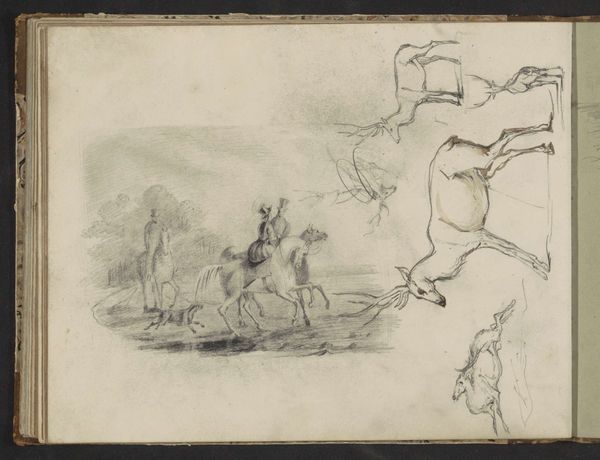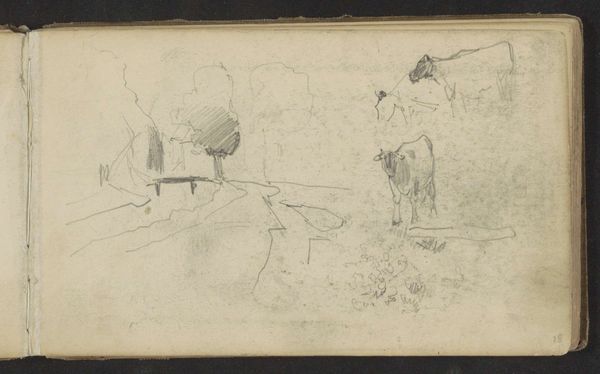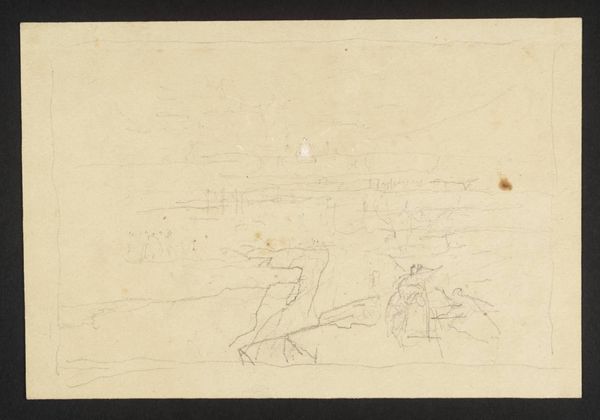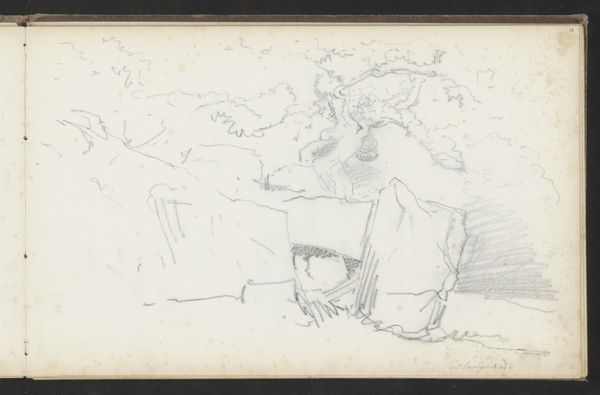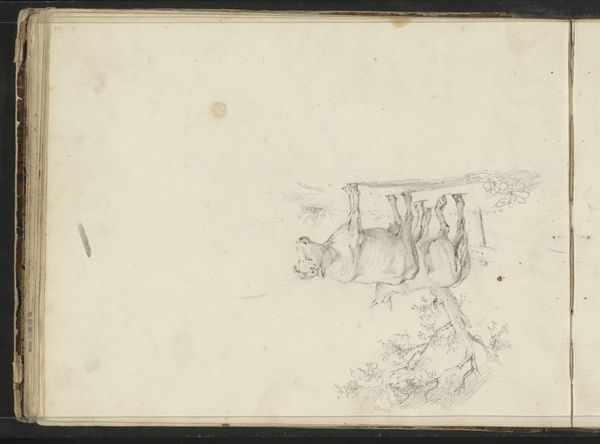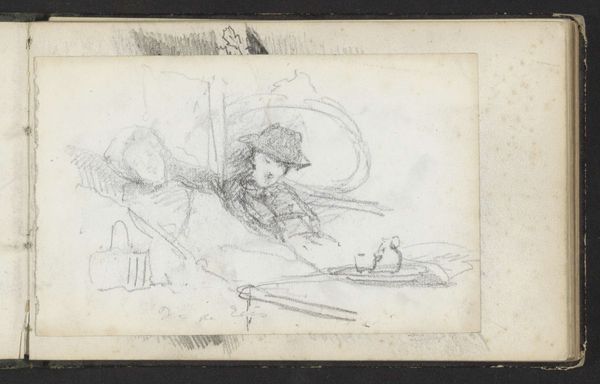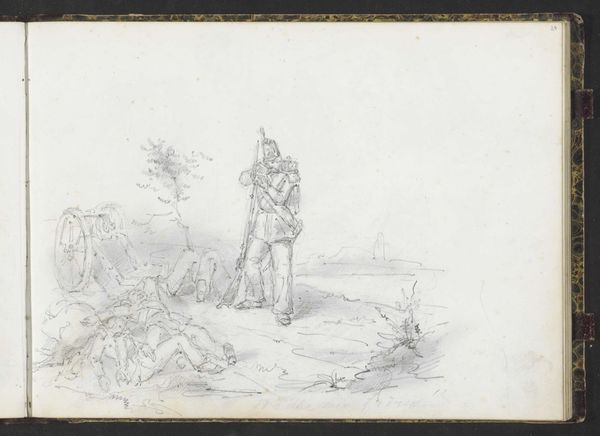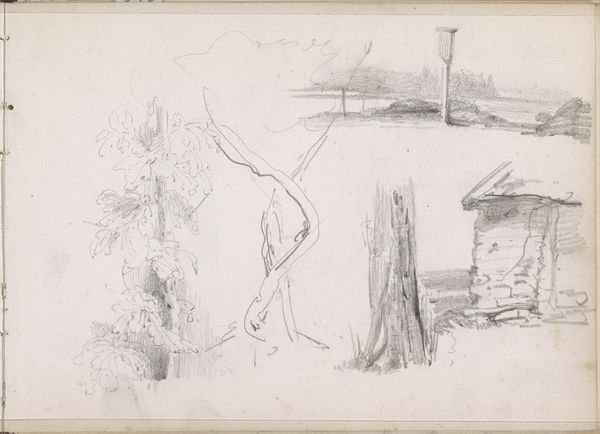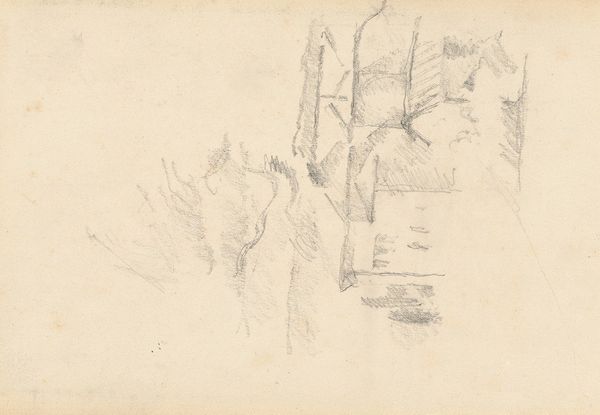
drawing, pencil
#
drawing
#
landscape
#
pencil
#
realism
Copyright: Rijks Museum: Open Domain
Editor: So, here we have "Abklatsch van de potloodtekening op pagina 21 recto" by Maria Vos, created sometime between 1834 and 1906. It's a pencil drawing, almost ghostly in its rendering of what looks like a landscape. What jumps out at you? Curator: For me, it’s the very nature of the "Abklatsch" – a copy, an impression. It draws attention to the labor involved, the repetitive act of creating copies, possibly for study or distribution. Consider the availability of materials during this period. Pencil drawings became increasingly popular as pencils became more affordable and readily available, transforming artistic production and democratizing artistic skill-building. Editor: That's fascinating! So, it's not just the landscape itself, but the accessibility of the medium that's significant? Curator: Precisely! How did mass production change the way art was made and circulated? This isn't just about 'high art'—it is a utilitarian means of conveying information and a demonstration of artistic skill that was more and more common. Do you see how the choice of medium connects with broader social shifts? Editor: Definitely. It makes me think about sketchbooks becoming more common, almost like a visual diary accessible to a wider audience. A subtle shift towards a democratization of art-making. Curator: Exactly. The artwork is also connected with commercial structures: Consider also, where would Maria Vos get this drawing implement and pad from? How much would these tools cost? This brings to mind the economic dimension of this seemingly simple sketch. Editor: I never thought about that. Thank you, Curator! Considering these questions about production, and material availability definitely gives me a more nuanced understanding of this piece. Curator: It's always valuable to consider the broader context in which art is produced and consumed.
Comments
No comments
Be the first to comment and join the conversation on the ultimate creative platform.
